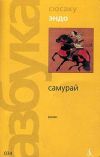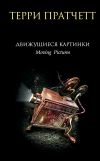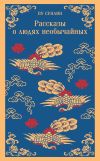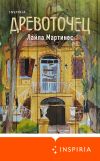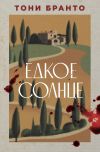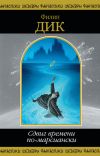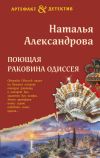Текст книги "Зов Ктулху / The Call of Chulhu"

Автор книги: Говард Лавкрафт
Жанр: Иностранные языки, Наука и Образование
Возрастные ограничения: +16
сообщить о неприемлемом содержимом
Текущая страница: 2 (всего у книги 10 страниц) [доступный отрывок для чтения: 3 страниц]
Legrasse, deeply impressed, had inquired about the historic affiliations of the cult. Castro, apparently, had told the truth when he said that it was wholly secret. The authorities at Tulane University[69]69
Tulane University – Тулейнский университет (частный исследовательский университет, расположенный в городе Новый Орлеан, Луизиана, США)
[Закрыть] could say nothing about either cult or image, and now the detective had come to the highest authorities in the country and met with the Greenland tale of Professor Webb.
The great interest aroused at the meeting by Legrasse’s tale is echoed in the correspondence of those who attended; although it was not mentioned in the formal publications of the society. Caution is the first care of scientists who often face charlatanry and imposture. Legrasse lent the image to Professor Webb. When Professor had died, it was returned to him. I viewed it not long ago. It is truly a terrible thing, and akin to the dream-sculpture of young Wilcox.
I did not wonder that my uncle was excited by the tale of the sculptor. Professor Angell started an investigation immediately; though privately I suspected young Wilcox of trickery. He could invent a series of dreams to heighten and continue the mystery. So, after thoroughly studying the manuscript again and correlating the theosophical and anthropological notes with the cult narrative of Legrasse, I made a trip to Providence to see the sculptor and accuse him of imposing upon a learned and aged man.
Wilcox still lived alone in the Fleur-de-Lys Building in Thomas Street, a hideous Victorian imitation of 17th century Breton Architecture.[70]70
Victorian imitation of 17th century Breton Architecture – викторианская имитация бретонской архитектуры XVII века
[Закрыть] I found him at work in his rooms, and understood at once that his genius is indeed profound and authentic. I believe one day he will be well-known as one of the great decadents; for he has crystallised in clay and in marble those nightmares and phantasies which Arthur Machen[71]71
Arthur Machen – Артур Мейчен (1863–1947), английский (валлийский) писатель, автор фантасмагорических историй.
[Закрыть] evokes in prose, and Clark Ashton Smith[72]72
Clark Ashton Smith – Кларк Эштон Смит (1983–1961), американский поэт и писатель, художник, скульптор; писал рассказы в жанре фантастики, фэнтэзи и ужасов.
[Закрыть] makes visible in verse and in painting.
Dark, frail, he asked me about my business without rising. Then I told him who I was, he displayed some interest; for my uncle had excited his curiosity studying his strange dreams, yet had never explained the reason for the study. In a short time I became convinced of his absolute sincerity, for he spoke of the dreams in a manner none could mistake. They had influenced his art profoundly, and he showed me a morbid statue whose contours almost made me shake. He could not recall the original of this thing except in his own dream bas-relief, but the outlines had formed themselves insensibly under his hands. It was, no doubt, the giant shape he had seen in delirium. But he really knew nothing of the hidden cult.
He talked of his dreams in a strangely poetic fashion; making me see the damp Cyclopean city of slimy green stone – whose geometry, he said, was all wrong – and hear with frightened expectancy the ceaseless, half-mental calling from underground: “Cthulhu fhtagn”, “Cthulhu fhtagn.”
These words had formed part of that dread ritual which told of dead Cthulhu’s dream-vigil in his stone vault at R’lyeh, and I felt deeply touched despite my rational beliefs. Wilcox, I was sure, had heard of the cult in some casual way, and had soon forgotten it amidst the mass of his equally weird reading and imagining. Later it had found subconscious expression in dreams, in the bas-relief, and in the terrible statue. The young man was slightly affected and slightly ill-mannered, that type I never liked, but I admit both his genius and his honesty. I wish him all the success his talent promises.
The matter of the cult still fascinated me, and sometimes I met serious researches. I visited New Orleans, talked with Legrasse and other people of that old-time party, saw the frightful image, and even questioned some mongrel prisoners. Old Castro, unfortunately, had been dead for some years. What I now heard was really no more than a detailed confirmation of what my uncle had written, and it excited me. I felt sure that I touched a very real, very secret, and very ancient religion whose discovery would make me a famous scientist. My attitude was absolute materialistic.
One thing I began to suspect, and which I now fear I know, is that my uncle’s death was not natural. He fell on a narrow hill street leading up from an ancient waterfront, after a careless push from a negro sailor. I did not forget the mixed blood and marine background of the cult-members in Louisiana, and I would not be surprised to learn of secret methods and rites and beliefs. Legrasse and his men, it is true, have been alive; but in Norway a certain seaman who saw everything is dead. Maybe the deeper inquiries of my uncle have come to sinister ears? I think Professor Angell died because he knew too much, or because he could learn too much. And at the moment I have learned much, too.
III. The Madness from the Sea
I had almost ceased my inquiries into what Professor Angell called the “Cthulhu Cult”, and was visiting a learned friend in Paterson, New Jersey; the curator of a local museum and a famous mineralogist. Examining one day the stones in a rear room of the museum, my eye noticed an odd picture in one of the old papers spread beneath the stones. It was the Australian journal, the Sydney Bulletin,[73]73
Australian journal, the Sydney Bulletin – австралийский журнал «Сиднейский бюллетень»
[Закрыть] for April 18, 1925. There was a picture of a hideous stone image almost identical with that which Legrasse had found in the swamp.
I read the article in detail. It was of great significance to my quest; and I carefully tore it out. It read as follows:
MYSTERY DERELICT FOUND AT SEA
Vigilant Arrives With Helpless Armed New Zealand Yacht in Tow.[74]74
Vigilant Arrives With Helpless Armed New Zealand Yacht in Tow. – «Неусыпный» прибывает в порт с неуправляемой новозеландской яхтой на буксире.
[Закрыть]One Survivor and Dead Man Found Aboard. Tale of Desperate Battle and Deaths at Sea. Rescued Seaman Refuses Particulars of Strange Experience. Odd Idol Found in His Possession. Inquiry to Follow.[75]75
Inquiry to Follow. – Предстоит расследование.
[Закрыть]
The Morrison Co.’s freighter Vigilant,[76]76
the Morrison Co.’s freighter Vigilant – сухогруз «Неусыпный», принадлежащий компании «Моррисон»
[Закрыть] bound from Valparaiso,[77]77
Valparaiso – Вальпараисо, город и морской порт в Чили
[Закрыть] arrived this morning at its wharf in Darling Harbour,[78]78
Darling Harbour – Дарлинг-Харбор
[Закрыть] having in tow the battled and disabled but heavily armed steam yacht Alert of Dunedin, N. Z.,[79]79
steam yacht Alert of Dunedin, N. Z. – паровая яхта «Бдительная» из Данедина, Новая Зеландия
[Закрыть] which was sighted April 12th in S. Latitude[80]80
S. Latitude – южная широта
[Закрыть] 34°21’, W. Longitude[81]81
W. Longitude – западная долгота
[Закрыть] 152°17’, with one living and one dead man aboard.
The Vigilant left Valparaiso March 25th, and on April 2nd was driven considerably south of its course by exceptionally heavy storms and monster waves. On April 12th the derelict was sighted. One survivor in a half-delirious condition and one man who had evidently been dead for more than a week were found. The living man was holding a horrible stone idol of unknown origin, about foot in height. Its nature is unknown, the authorities at Sydney University, the Royal Society, and the Museum in College Street say. The survivor says he found it in the cabin of the yacht, in a small carved shrine.
This man told an exceedingly strange story of piracy and slaughter. He is Gustaf Johansen,[82]82
Gustaf Johansen – Густав Йохансен
[Закрыть] a Norwegian, from the two-masted schooner Emma of Auckland,[83]83
two-masted schooner Emma of Auckland – двухмачтовая шхуна «Эмма» из Окленда
[Закрыть] which sailed for Callao[84]84
Callao – Кальяо, автономный регион в Перу на побережье Тихого океана
[Закрыть] February 20th with a complement of eleven men. The Emma, he says, was delayed and thrown widely south of her course by the great storm of March 1st, and on March 22nd, in S. Latitude 49°51’ W. Longitude 128°34’, encountered the Alert, manned by a queer and evil-looking crew of Kanakas and half-castes.[85]85
Kanakas and half-castes – канаки и полукровки
[Закрыть] They ordered to turn back, Capt. Collins[86]86
Capt. Collins – капитан Коллинз
[Закрыть] refused; and the strange crew began to fire savagely and without warning. Though the schooner began to sink from shots beneath the water-line, the Emma’s men managed to heave alongside their enemy and board it. They were forced to kill them all.
Three of the Emma’s men, including Capt. Collins and First Mate Green,[87]87
First Mate Green – первый помощник Грин
[Закрыть] were killed; and the remaining eight under Second Mate Johansen[88]88
under Second Mate Johansen – под командованием второго помощника Йохансена
[Закрыть] proceeded to navigate the captured yacht. The next day, it appears, they raised and landed on a small island, although none knew about it in that part of the ocean. Six of the men somehow died ashore; Johansen says very little about this part of his story. Later, it seems, he and one companion boarded the yacht and tried to manage it, but were driven by the storm of April 2nd. From that time till his rescue on the 12th the man remembers little, and he does not even recall when William Briden,[89]89
William Briden – Уильям Брайден
[Закрыть] his companion, died. There was no apparent cause for Briden’s death, and it happened probably due to excitement or exposure. The Alert was well known as an island trader,[90]90
island trader – каботажное судно
[Закрыть] and bore an evil reputation. It was owned by a curious group of half-castes whose frequent meetings and night trips to the woods attracted curiosity. It started in great haste just after the storm and earth tremors of March 1st. Our Auckland correspondent gives the Emma and her crew an excellent reputation, and Johansen is described as a sober and worthy man. The admiralty will make Johansen speak more freely than he has done hitherto.
This was all, together with the picture of the hellish image; but what a train of ideas it started in my mind! Here were new data on the Cthulhu Cult, and evidence that it had strange interests at sea as well as on land. Why did the hybrid crew order the Emma to sail back? What was the unknown island on which six of the Emma’s crew had died, and about which Johansen was so secretive? And most important, what deep connection of dates was there, so carefully noted by my uncle?
March 1st – or February 28th according to the International Date Line[91]91
according to the International Date Line – согласно международной демаркацией суточного времени
[Закрыть] – the earthquake and storm had come. The Alert and her crew had sailed eagerly from Dunedin as if somebody had summoned it, and on the other side of the earth poets and artists had begun to dream of a strange Cyclopean city while a young sculptor had moulded in his sleep the form of the dreaded Cthulhu. March 23rd the crew of the Emma landed on an unknown island and left six men dead; and on that date the dreams of sensitive men gained heightened vividness and darkened with dread of a giant monster’s malign pursuit, while an architect had gone mad and a sculptor had gone suddenly into delirium! And what of this storm of April 2nd – the date on which all dreams of the strange city ceased, and Wilcox recovered from the strange fever? An old Castro talked about the sunken, star-born Old Ones and their coming reign; their faithful cult and their mastery of dreams. In some way the second of April had stopped monstrous menace, the siege of mankind’s soul.
That evening I took a train for San Francisco. In less than a month I was in Dunedin; where, however, I found that little was known of the strange cult-members who had entered the old sea-taverns. But there was vague talk about one inland trip these mongrels had made, during which faint drumming and red flame were noted on the distant hills. In Auckland I learned that Johansen had returned with yellow hair turned white[92]92
yellow hair turned white – русые волосы поседели
[Закрыть] after a questioning at Sydney, and had thereafter sold his cottage in West Street and sailed with his wife to his old home in Oslo. All the admiralty officials could do was to give me his Oslo address.
After that I went to Sydney and talked uselessly with seamen and members of the vice-admiralty court. I saw the Alert, now sold and in commercial use, but gained nothing. The crouching image with its cuttlefish head, dragon body, scaly wings, and hieroglyphed pedestal, was preserved in the Museum at Hyde Park; and I studied it long and well. Geologists, the curator told me, had found it a monstrous puzzle; for they vowed that the rock like it did not exist. Then I remembered the words Old Castro had told Legrasse about the Old Ones: “They had come from the stars, and had brought Their images with Them.”
I decided to visit Mate Johansen in Oslo. Johansen lived, I discovered, in the Old Town. I made a brief taxi-trip, and knocked at the door of a neat and ancient building. A sad-faced woman in black came out and told me that Gustaf Johansen was dead.
He had not lived long after his return, said his wife, the sea events in 1925 had broken him. He had told her no more than he told the public, but had left a long manuscript – of “technical matters” as he said – written in English. During a walk near the Gothenburg dock, a bundle of papers falling from an attic window had knocked him down. Two sailors at once helped him, but before the ambulance could reach him he was dead. Physicians said that his death occurred due to a heart trouble and a weakened constitution.
I persuaded the widow that I had to get her husband’s “technical matters”. I bore the document away and began to read it on the London boat.
It was a naive sailor’s effort at a diary – to recall day by day that last awful voyage.
Johansen, thank God, did not know quite all, even though he saw the city and the Thing. I shall never sleep calmly again when I think of the horrors that lurk ceaselessly behind life in time and in space, and of those blasphemies from elder stars which dream beneath the sea.
Johansen’s voyage had begun just as he told it to the vice-admiralty. The Emma had left Auckland on February 20th, and had felt the full force of the earthquake-born tempest. Once more under control,[93]93
once more under control – снова подчиняясь управлению
[Закрыть] the ship was making good progress when held up[94]94
when held up – когда бы остановлен
[Закрыть] by the Alert on March 22nd, and I could feel the mate’s regret as he wrote of her bombardment and sinking. He speaks with significant horror of the swarthy cult-fiends on the Alert. Then, driven ahead by curiosity in their captured yacht under Johansen’s command, the men saw a great stone pillar sticking out of the sea, and in S. Latitude 47°9’, W. Longitude 123°43’, came upon a coastline of mingled mud, ooze, and weedy Cyclopean masonry which can be nothing less than the tangible substance of earth’s supreme terror – the nightmare corpse-city of R’lyeh, that was built in measureless ages behind history by the vast, loathsome creatures that came down from the dark stars. There lay great Cthulhu and his hordes, hidden in green slimy vaults and sending out the thoughts that spread fear to the dreams of the sensitive. The thoughts called imperiously to the faithful to come on a pilgrimage of liberation and restoration. All this Johansen did not suspect, but he soon saw enough!
I suppose that only a single mountain-top, the hideous monolith-crowned citadel whereon great Cthulhu was buried, actually emerged from the waters. Johansen and his men were awed by the cosmic majesty of this dripping Babylon of elder demons, and probably guessed that it was nothing of this planet. Awe at the unbelievable size of the greenish stone blocks, at the height of the great carven monolith, and at the identity of the colossal statues and bas-reliefs with the queer image found in the shrine on the Alert, is visible in every line of the frightened description.
Johansen and his men landed at a sloping mud-bank on this monstrous Acropolis, and clambered slipperily up over titan oozy blocks. Even the sun seemed distorted.
It was Rodriguez the Portuguese[95]95
Rodriguez the Portuguese – португалец Родригес
[Закрыть] who climbed up the foot of the monolith and shouted of what he had found. The rest followed him, and looked curiously at the immense carved door with the squid-dragon bas-relief. It was, Johansen said, like a great barn-door; and they all felt that it was a door, though they could not decide whether it lay flat like a trap-door[96]96
trap-door – дверь-люк
[Закрыть] or slantwise like an outside cellar-door. As Wilcox said, the geometry of the place was all wrong. One could not be sure that the sea and the ground were horizontal, because the relative position of everything else seemed phantasmally variable.
Briden pushed at the stone in several places without result. Then Donovan[97]97
Donovan – Донован
[Закрыть] studied the edge, pressing each point separately. He climbed along the grotesque stone moulding – and the men wondered how any door in the universe could be so vast. Then, very softly and slowly, the acre-great lintel began to go down; and they saw that it was balanced.
Everyone watched the queer recession of the monstrously carven portal. In this prismatic distortion it moved in a diagonal way.
The aperture was black. The odour rising from the newly opened depths was intolerable. Everyone listened, and everyone was listening still when It appeared and gropingly squeezed Its gelatinous green immensity through the black doorway into the tainted outside air of that poison city of madness.
Of the six men who never reached the ship, two died immediately. The Thing cannot be described – there is no language for such abysms of shrieking and immemorial lunacy, such contradictions of all matter, force, and cosmic order. A mountain walked or stumbled. God! What wonder[98]98
what wonder – что же удивляться
[Закрыть] that across the earth a great architect went mad, and poor Wilcox raved with fever in that telepathic instant? The Thing of the idols, the green, sticky spawn of the stars, had awaked to claim his own.[99]99
to claim his own – заявить свои права
[Закрыть] The stars were right again, and what an age-old cult had failed to do, a band of innocent sailors had done by accident. After millions of years great Cthulhu was loose again, and ravening for delight.
Three men were swept up by the flabby claws before anybody turned. God rest them, if there be any rest in the universe. They were Donovan, Guerrera, and Angstrom.[100]100
Donovan, Guerrera, and Angstrom – Донован, Геррера и Ангстром
[Закрыть] Parker slipped as the other three were running to the boat, and Johansen swears he was swallowed up by masonry. When Briden and Johansen reached the boat, and pulled desperately for the Alert, the mountainous monstrosity flopped down the slimy stones and was floundering at the edge of the water.
Slowly, amidst the distorted horrors of that indescribable scene, the Alert began to sail; while on the masonry of that shore great Cthulhu slid greasily into the water and began to pursue. Briden looked back and went mad. He kept on laughing till death found him one night in the cabin while Johansen was wandering deliriously.
But Johansen had not surrendered. Knowing that the Thing could surely overtake the Alert, he set the engine for full speed, and reversed the wheel. The brave Norwegian drove his vessel head on against the pursuing jelly. Johansen drove on relentlessly.
There was a horrific bursting as of an exploding bladder, a stench as of a thousand opened graves, and a sound that the chronicler could not put on paper. For an instant the ship was hidden by an acrid green cloud, and – God in heaven![101]101
God in heaven! – Великий Боже!
[Закрыть] – the distance widened every second as the Alert gained impetus from its mounting steam.
That was all. After that Johansen only watched the idol in the cabin and prepared some food for himself and the laughing maniac. He did not try to navigate, for he was completely exhausted. Then came the storm of April 2nd, and he lost his consciousness.
One day came rescue – the Vigilant, the vice-admiralty court, the streets of Dunedin, and the long voyage back home to the old house. He could not tell – they would think him mad.[102]102
they would think him mad – его бы сочли за сумасшедшего
[Закрыть] He wrote of what he knew before death came. Death would be a boon if only it could delete memories.
That was the document I read, and now I have placed it in the tin box beside the bas-relief and the papers of Professor Angell. This record of mine will be placed with them. I do not think my life will be long. As my uncle went, as poor Johansen went, so I shall go. I know too much, and the cult still lives.
Cthulhu still lives, too, I suppose, again in that chasm of stone which has shielded him since the sun was young. His accursed city is sunken once more, for the Vigilant sailed over the spot after the April storm; but his ministers on earth still bellow and prance and slay around idol-capped monoliths in lonely places. Who knows the end? What has risen may sink, and what has sunk may rise. It waits and dreams in the deep, and decay spreads over the tottering cities of men. A time will come – but I must not and cannot think about it! Let me pray that, if I do not survive this manuscript, my executors let nobody read this.
At the Mountains of Madness
I
I don’t want to tell my reasons for opposing the invasion of the Antarctic – with its vast fossil hunt and its melting of the ancient ice caps. I can understand clearly that my story will seem extravagant and incredible. But there are photographs, both ordinary and aerial, and they will count in my favor,[103]103
in my favor – в мою пользу
[Закрыть] for they are vivid and graphic. Of course, some people can say that is all fakery. And there are ink drawings which can be jeered at as obvious impostures.
I must rely on the judgment and standing of the few scientific leaders who have, on the one hand, sufficient independence of thought; and on the other hand, sufficient influence to deter the exploring world in general from any over-ambitious program in the region of those mountains of madness. It is pity that ordinary men like myself and my colleagues, connected only with a small university, have little chance of making an impression.
In the strictest sense, we are not specialists in the fields concerned. Miskatonic University[104]104
Miskatonic University – Мискатоникский университет (вымышленный университет, расположенный в вымышленном городе Аркхем, штат Массачусетс, США).
[Закрыть] sent me as a geologist. The aim of our expedition was to secure deep-level specimens of rock and soil from various parts of the Antarctic continent. We had a remarkable drill devised by Professor Frank H. Pabodie[105]105
Frank H. Pabodie – Фрэнк Х. Пэбоди
[Закрыть] of our engineering department. I had no wish to be a pioneer in any other field than this, but I hoped that the use of this new mechanical device would discover materials, unacceptable by the ordinary methods of collection.
Pabodie’s drilling apparatus was unique and radical in its lightness, portability, and capacity. Three sledges could carry steel head, jointed rods,[106]106
jointed rods – складной хвостовик бура
[Закрыть] gasoline motor, collapsible wooden derrick,[107]107
collapsible wooden derrick – разборная деревянная буровая вышка
[Закрыть] dynamiting paraphernalia,[108]108
dynamiting paraphernalia – принадлежности для взрывных работ
[Закрыть] cords, rubbish-removal auger, and sectional piping for bores five inches wide and up to one thousand feet deep. This was possible due to aluminum alloy. Four large aeroplanes could transport our entire expedition from a base at the edge of the great ice barrier to various inland points.
We planned to explore a great area, operating mostly in the mountain ranges and on the plateau south of Ross Sea;[109]109
Ross Sea – море Росса (море в Тихом океане у берегов Земель Виктории и Мэри Бэрд, Западная Антарктида)
[Закрыть] regions explored by Shackleton, Amundsen, Scott, and Byrd.[110]110
Shackleton, Amundsen, Scott, and Byrd – Шеклтон, Амундсен, Скотт и Бэрд
[Закрыть] We expected to get a quite unprecedented amount of material – especially in the pre-Cambrian[111]111
pre-Cambrian – докембрийский период (криптозой, предшествовал началу кембрийского периода (около 540 млн. лет назад)
[Закрыть] strata. We wished also to obtain a variety of the upper fossiliferous rocks, since the primal life history of this realm of ice and death is of the highest importance to our knowledge of the earth’s past. The Antarctic continent was once temperate and even tropical; and we hoped to expand that information in variety, accuracy, and detail.
The public knows of the Miskatonic Expedition through our frequent reports to the Arkham Advertiser and Associated Press,[112]112
Arkham Advertiser and Associated Press – «Аркхемский листок» и «Ассошиэйтид Пресс»
[Закрыть] and through the later articles of Pabodie and myself. There were four men from the University – Pabodie, Lake[113]113
Lake – Лэйк
[Закрыть] of the biology department, Atwood[114]114
Atwood – Этвуд
[Закрыть] of the physics department – also a meteorologist – and myself, representing geology – besides sixteen assistants: seven graduate students from Miskatonic and nine skilled mechanics. Of these sixteen, twelve were qualified aeroplane pilots, they were competent wireless operators as well. Eight of them understood navigation with compass and sextant, as did Pabodie, Atwood, and I. In addition, of course, our two ships were fully manned.[115]115
were fully manned – были полностью укомплектованы командами
[Закрыть]
The Nathaniel Derby Pickman Foundation[116]116
Nathaniel Derby Pickman Foundation – Фонд Натаниэла Дерби Пикмена
[Закрыть] financed the expedition. The dogs, sledges, machines, camp materials, and unassembled parts of our five planes were delivered in Boston, and there our ships were loaded. We were marvelously well-equipped for our specific purposes. As the newspapers told, we sailed from Boston Harbor on September 2nd, 1930, taking a leisurely course down the coast and through the Panama Canal,[117]117
Panama Canal – Панамский канал
[Закрыть] and stopping at Samoa and Hobart, Tasmania,[118]118
Samoa and Hobart, Tasmania – Самоа и Хобарт, Тасмания
[Закрыть] where we got final supplies. Our ship captains were J. B. Douglas,[119]119
J. B. Douglas – Дж. Б. Дуглас
[Закрыть] commanding the brig Arkham, and Georg Thorfinnssen,[120]120
Georg Thorfinnssen – Георг Торфинсен
[Закрыть] commanding the Miskatonic – both veteran whalers in Antarctic waters.
At about 62° South Latitude we noticed our first icebergs – table-like objects with vertical sides – and just before reaching the Antarctic circle,[121]121
Antarctic circle – Южный полярный круг
[Закрыть] which we crossed on October 20th with appropriately ceremonies, we were considerably troubled with field ice. The falling temperature bothered me considerably after our long voyage through the tropics. Very often the curious atmospheric effects enchanted me vastly; distant bergs became the battlements of unimaginable cosmic castles.
Pushing through the ice, we regained open water at South Latitude 67°, East Longitude 175°. On the morning of October 26th a snow-clad mountain chain appeared on the south. That was an outpost of the great unknown continent and its cryptic world of frozen death. These peaks were obviously the Admiralty Range discovered by Ross,[122]122
Admiralty Range discovered by Ross – Адмиралтейские горы, открытые Россом
[Закрыть] and our task was to round Cape Adare[123]123
Cape Adare – мыс Адэр (мыс и полуостров, расположенные на крайнем северо-востоке региона Земля Виктории, Восточная Антарктида)
[Закрыть] and sail down the east coast of Victoria Land[124]124
Victoria Land – Земля Виктории (район Антарктиды)
[Закрыть] to our base on the shore of McMurdo Sound,[125]125
the shore of McMurdo Sound – побережье пролива Мак-Мердо (Мак-Мердо – пролив в Антарктиде, покрытые льдом воды которого простираются приблизительно на 55 км в длину и ширину. На севере пролив выходит в Море Росса).
[Закрыть] at the foot of the volcano Erebus[126]126
Erebus – Эребус
[Закрыть] in South Latitude 77° 9’.
The last part of the voyage was vivid and fancy-stirring. Great barren peaks of mystery, white snow, bluish ice and water lanes, and black bits of exposed granite slope. Something about the scene reminded me of the strange and disturbing Asian paintings of Nicholas Roerich,[127]127
Nicholas Roerich – Николай Рерих (1874–1947), русский художник, сценограф, философ-мистик, писатель, путешественник, археолог, общественный деятель.
[Закрыть] and of the disturbing descriptions of the evil plateau of Leng[128]128
plateau of Leng – плоскогорье Ленг (упоминаемое Лавкрафтом холодное и пустынное плато)
[Закрыть] which appear in the dreaded Necronomicon of the mad Arab Abdul Alhazred. I was rather sorry, later on, that I had looked into that monstrous book at the college library.
On the 7th of November, we passed Franklin Island;[129]129
Franklin Island – остров Франклина (скалистый остров в проливе Кеннеди в составе пролива Нэрса, практически в центральной части Арктики)
[Закрыть] and the next day the cones of Mts. Erebus and Terror[130]130
Mts. Erebus and Terror – вулканы Эребус и Террор
[Закрыть] on Ross Island appeared, with the long line of the Parry Mountains[131]131
Parry Mountains – горы Перри
[Закрыть] beyond. There was a white line of the great ice barrier, rising perpendicularly to a height of two hundred feet like the rocky cliffs of Quebec, and marking the end of southward navigation. In the afternoon we entered McMurdo Sound and stood off the coast[132]132
stood off the coast – встали на якорь
[Закрыть] near Mt. Erebus. Beyond it rose the white, ghostlike height of Mt. Terror, ten thousand, nine hundred feet in altitude.
One of the graduate assistants – a brilliant young fellow named Danforth[133]133
Danforth – Данфорт
[Закрыть] – noticed lava on the snowy slope. On the barren shore, and on the lofty ice barrier in the background, myriads of grotesque penguins walked.
Using small boats, we landed on Ross Island shortly after midnight on the morning of the 9th, preparing to unload supplies. Our camp on the frozen shore below the volcano’s slope was only a provisional one, headquarters were situated aboard the Arkham. We landed all our drilling apparatus, dogs, sledges, tents, provisions, gasoline tanks, experimental ice-melting outfit,[134]134
experimental ice-melting outfit – экспериментальное оборудование для растапливания льда
[Закрыть] cameras, both ordinary and aerial, aeroplane parts, and other accessories, including three small portable wireless devices – besides those in the planes – capable of communicating with the Arkham’s large device from any part of the Antarctic continent that we would be likely to visit. The ship’s radio, communicating with the outside world, was able to convey press reports to the Arkham Advertiser’s powerful wireless station on Kingsport Head, Massachusetts.[135]135
Kingsport Head, Massachusetts – Кингспорт-Хед, Массачусетс
[Закрыть] We hoped to complete our work during an Antarctic summer; but if this became impossible, we would winter on the Arkham, sending the Miskatonic north for another summer’s supplies.
I need not repeat what the newspapers have already published about our early work. The health of our party – twenty men and fifty-five Alaskan sledge dogs – was remarkable, though of course we had not encountered really destructive temperatures or windstorms.
We had reached Beardmore Glacier,[136]136
Beardmore Glacier – ледник Бирдмора (один из крупнейших долинных ледников в мире длиной более 160 километров)
[Закрыть] the largest valley glacier in the world, and the frozen sea changed to a mountainous coast line. We were some eight thousand, five hundred feet above sea-level, and when experimental drillings revealed solid ground only twelve feet down through the snow and ice at certain points, we made considerable use of the small melting apparatus.
In certain of the sandstones we found some highly interesting fossil fragments; notably ferns, seaweeds, and mollusks – all this helps to study the region’s primordial history. There was also a queer triangular, striated marking, about a foot in greatest diameter. Lake, as a biologist, found these curious marking unusually puzzling and provocative, though to my geological eye it looked not unlike some of the ripple effects common in the sedimentary rocks. Since slate is no more than a metamorphic formation, I saw no reason for extreme wonder.
On January 6th, 1931, Lake, Pabodie, Danforth, the other six students, and myself flew directly over the South Pole in two planes, but there was a high wind. This was, as the papers have stated, one of several observation flights. Distant mountains floated in the sky as enchanted cities, and often the whole white world would dissolve into a gold, silver, and scarlet land of dreams under the magic of the low midnight sun.
We resolved to carry out our original plan: to fly five hundred miles eastward and establish a new base. Our health had remained excellent. It was now midsummer, and with haste and care we might be able to conclude work by March and avoid a tedious wintering through the long Antarctic night. No doubt, we had our good luck.
Lake insisted on a westward – or rather, northwestward – trip before our shift to the new base. He was very interested in that triangular marking in the slate. He was strangely convinced that the marking was the print of some bulky, unknown, and unclassifiable organism of advanced evolution. But these fragments, with their odd marking, were five hundred million – a thousand million years old.
Правообладателям!
Данное произведение размещено по согласованию с ООО "ЛитРес" (20% исходного текста). Если размещение книги нарушает чьи-либо права, то сообщите об этом.Читателям!
Оплатили, но не знаете что делать дальше?











